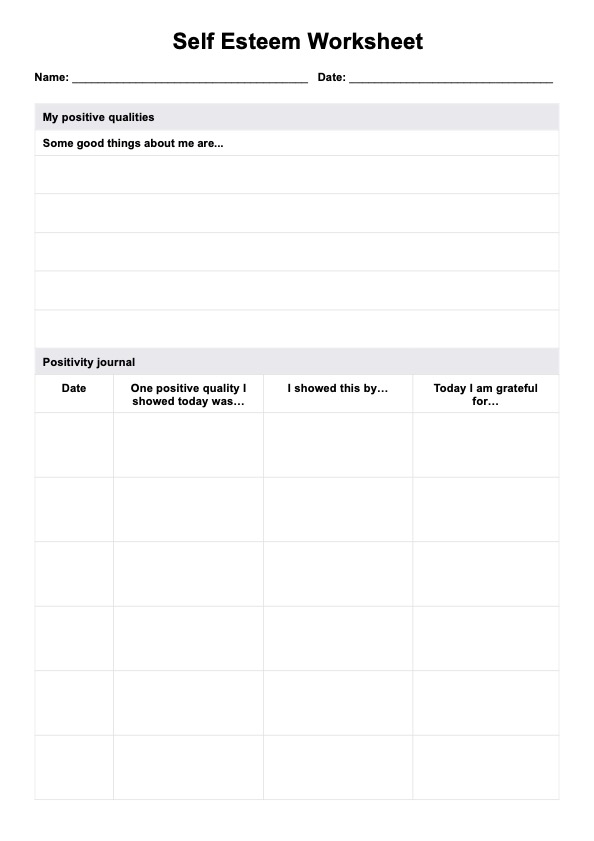The 3 C's of self-esteem are confidence, competence, and connection. Confidence involves believing in oneself, competence refers to having the skills and abilities to achieve goals, and connection highlights the importance of relationships and social interactions.

Self Esteem Worksheets
Help your clients recognize all the good they have to offer the world with our Self-Esteem Worksheet, designed to help them identify and affirm their positive traits and build up a positive view of themselves.
Self Esteem Worksheets Template
Commonly asked questions
The 5 areas of self-esteem are self-knowledge, self-love, self-confidence, self-respect, and self-acceptance. Each area contributes to a person's overall sense of worth and well-being, encompassing understanding oneself, appreciating personal value, believing in one's abilities, respecting oneself, and accepting one's true nature.
To improve self-esteem and self-worth, practice positive self-affirmations, set and achieve small goals, seek supportive relationships, focus on personal strengths, and engage in activities that foster a sense of accomplishment and joy. Regularly reflecting on achievements and maintaining a gratitude journal can also enhance self-perception.
EHR and practice management software
Get started for free
*No credit card required
Free
$0/usd
Unlimited clients
Telehealth
1GB of storage
Client portal text
Automated billing and online payments











